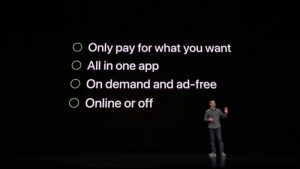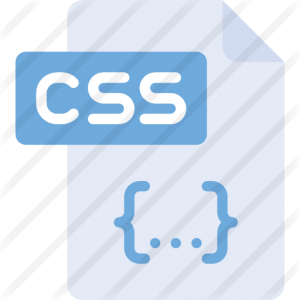Inadvertently ruining your newly redesigned website’s SEO can be a nightmare. Columnist Will Scott explains four mistakes you must avoid before you launch.

Imagine this nightmare scenario: you’re on the verge of launching your newly redesigned website, and you’re already anticipating new leads and returning customers. You’ve spent countless hours working through every last detail before even considering unveiling your new creation to the world. The big day arrives, and you give the green light to launch.
Suddenly, you realize you forgot to plan for one crucial element: the SEO best practices that you had so carefully incorporated into your old website.
Unfortunately, this is not just a nightmare that can be forgotten once you’ve had your morning coffee, but something I’ve seen happen to countless small businesses over my 10 years as the owner of an SEO and online marketing agency.
Your redesigned website was meant to give your business a new lease on life, but instead, you’ve destroyed your organic search rankings and traffic overnight. When you change your site without thoroughly thinking through the SEO implications, you might do something harmful like throw away substantive content or change every page’s URL without making sure to redirect the old ones.
Luckily, you can easily avoid this frightening scenario altogether by planning ahead and learning from the mistakes illustrated in the examples below.
Mistake #1: You added Flash-based or unoptimized images
So, you added a number of big and eye-catching images to your new landing pages in the hopes of making your site visually appealing. Or maybe you moved to a more visual, but less SEO-friendly Flash design.
Don’t make the mistake of forgetting to optimize the new images, or else the pages on your new site may load so slowly that potential customers exit before viewing any of the content. Relying on Flash elements also can cause huge problems for SEO and will actually prohibit many mobile users from viewing the site.
In the land of online commerce, patience is not a virtue — today’s savvy customers are more impatient waiting for pages to load. According to Radware, customers will abandon a page within three seconds if it hasn’t loaded.
Consider an example from the publishing world. The Financial Times, while working on a new version of its site, ran an experiment to understand how speed impacted user engagement — specifically, the number of articles read by visitors, which is one of the primary ways they measure their success. They then used this data to calculate the impact on their revenue.
What they found was that the speed of their site greatly affected their revenue streams, from many hundreds of thousands of dollars in the short-term to millions in the long-term.
Mistake #2: You neglected to migrate important content
Most of us understand that a successful website incorporates informative and unique content on every page, which is specifically targeted to your audience. This includes the behind-the-scenes content, too, such as descriptive alt text on images and meta data that adds clear details.
Although a new site provides a great opportunity to update weak content, it’s also critical to transfer over content that is already tied to your strong organic search traffic.
In this real-life disaster story of content migration gone wrong, an independent software vendor was desperately in need of a new site design and was hoping to update its technical content to create a better experience for the average user. Although they attempted to think through how to preserve their existing SEO practices, they proceeded with the update while making one major omission.
During the migration, a field in their CMS that automatically populates as a meta description was turned off and as a result, every single product page on their new site was missing a meta description.
Mistake #3: You blocked search engines from crawling your site
When a website launch goes bad, the main failure is typically due to mistakes that were made in the early planning stages. Not allowing search engines to crawl your new site is a common error that often happens when sites are moved from the staging area to the live server.
Perhaps you used robots.txt to block search engine crawlers while the site was in development, but forgot to update the file when the site went live. Or maybe you accidentally put firewalls in place that are blocking site crawlers.
In this case, a webmaster used a WordPress plugin called Wordfence to prevent bots from crawling the site, in an attempt to reduce server load and fake referrals. This plugin allows you to whitelist certain bots, allowing them to crawl the site. He whitelisted several known Googlebot IPs, but unfortunately Google switched the IPs it was crawling from, causing the new IPs to get blocked.
While these new IPs were only blocked for three or four days, it caused the site’s web traffic to halt. When the mistake was discovered, and traffic started picking up again, it remained sluggish.
Mistake #4: You didn’t prioritize mobile-friendliness
Last year, the infamous “Mobilegeddon” update took the SEO world by storm when Google kicked into gear its mobile-friendly algorithm.
Although the impact seemed minimal at first, a later report by Adobe found that the new algorithm had as big an impact as feared. Adobe monitored traffic to over 5,000 sites and then split up the results into mobile-friendly versus non-mobile-friendly. The report found that traffic to mobile unfriendly websites from Google mobile searches declined 12% in just the first two months after the update.
Additionally, according to a study from Moovweb, when a site is not mobile-friendly, there are obvious visibility, ranking, and usability consequences. If you focused primarily on how your new site would look on a laptop, you have inadvertently caused yourself more harm than good.
Today’s online shoppers are heavy mobile users who will be ready to bounce if your site can’t be properly read on a mobile device. The big algorithm changes caused multitudes of webmasters to change their sites so that they would still be visible in Google’s organic search results. Up to this point, smaller companies have taken the biggest hit from Mobilegeddon as they struggle to adapt to the mobile changes.
Do you have a disaster story from a client who failed to consider these critical SEO implications before launching their new website? Or a success story of someone who did things right? If so, I’d love to hear from you!
[Article on Search Engine Land.]
Some opinions expressed in this article may be those of a guest author and not necessarily Marketing Land. Staff authors are listed here.
Marketing Land – Internet Marketing News, Strategies & Tips
(62)
Report Post










